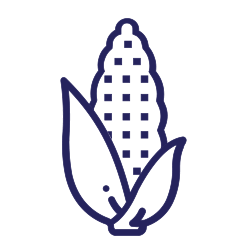« Return to all Production Resources
Section Title
Winter Wheat Fertility Checklist for Spring
- Winter Wheat
While many winter wheat farmers choose to apply most of their nitrogen (N) fertilizer in the fall, early spring is a good opportunity to evaluate your fertility strategy. Taking into consideration your yield goals, fertilizer costs, winter survival and stand assessments, application of additional fertilizer may be beneficial. To maximize your winter wheat crop’s potential, here is a fertility checklist for the spring:
- If some nitrogen (N) was not applied in the fall, it is important to apply N in early spring to promote tillering, especially if stands are thin. Nitrogen in the nitrate form is more readily available, so UAN (28-0-0) is a very appropriate product to use. If some N (25 or more pounds per acre) was applied in the fall, the immediacy for spring application is not as critical.
- If UAN solution is being applied, ensure it is dribble banded. This reduces immobilization or tie up in surface residue and reduces volatilization losses.
- If rainfall is not expected within three to four days of application, it is advised to apply urea and UAN with a urease inhibitor to protect against volatilization. Many generic NBPT products are now available, but to achieve the same standard of protection that farmers have become accustomed to with Agrotain Ultra, ensure the rates of active ingredient per pound of N are similar between Agrotain Ultra and the generic of choice.
- Soils with high sand content, low organic matter and high pH naturally tend to be copper (Cu) deficient. Confirm with soil testing. In-season foliar applications can be effective at the stem-elongation to flag-leaf-emergence stages. Under severe deficiencies, applications at both stages may be required.
- If you have withheld the full N requirement due to high fertilizer costs, tight N supplies or excessively dry soils, you have up until the stem-elongation to the flag-leaf-emergence stages to make the final application for full yield expression and improved protein content. However, rainfall must be received within the week to prevent stranded N at the soil surface.
- If the U.S. winter wheat harvest reveals low protein levels and high protein premiums in July, there may still be time to supplement your crop with N to increase grain protein. The application of 30 pounds of N per acre as UAN with 50 per cent water sprayed one week post-anthesis in the evening has been successful in generating modest increases in grain protein.
Information provided by John Heard, soil fertility specialist with Manitoba Agriculture.











